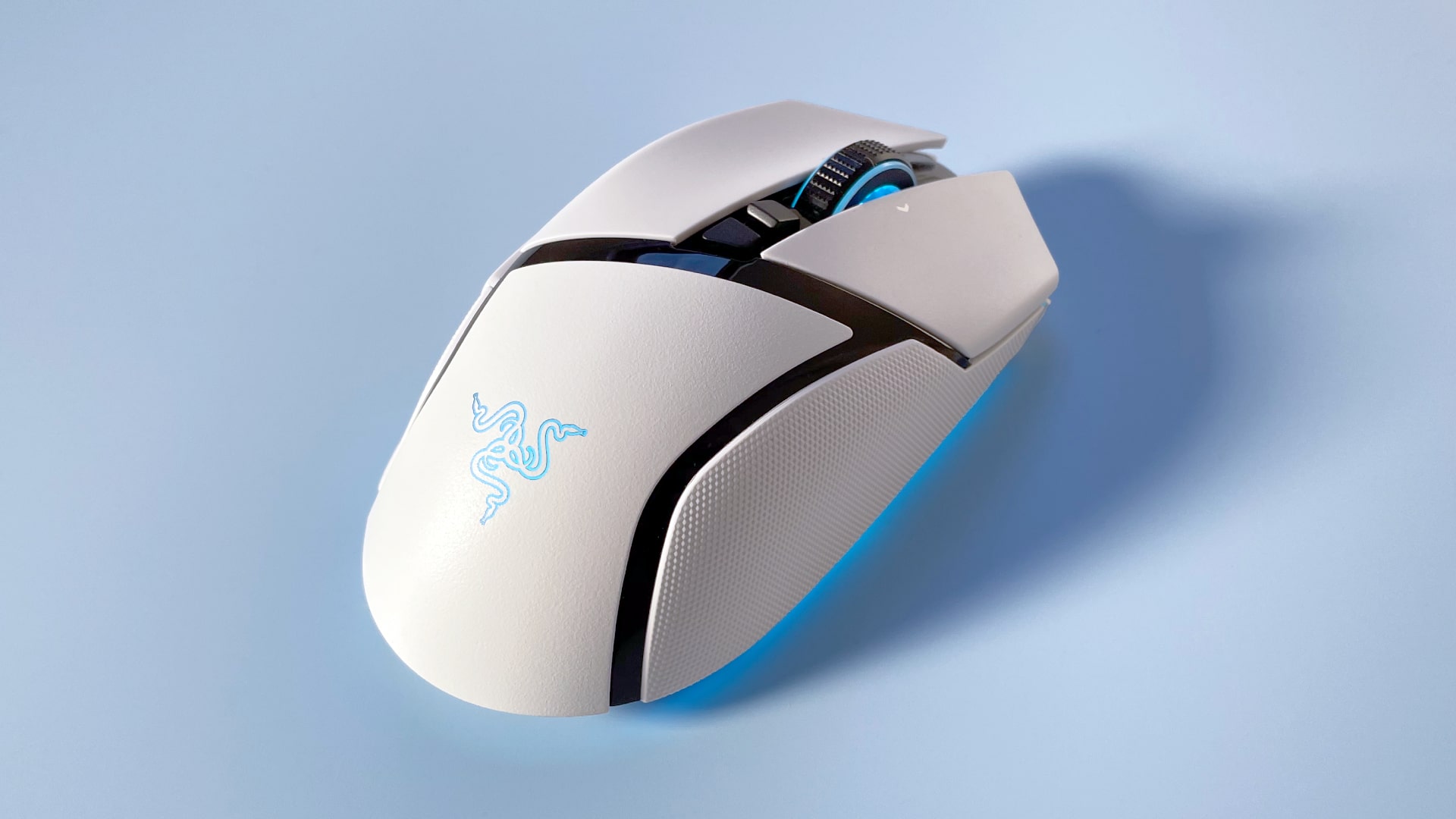TechRadar Verdict
The Razer Basilisk V3 Pro 35K takes an already great mouse and elevates it further. Its bulk and weight won’t be for everyone, but there’s no doubt it brings an awful lot to the table.
Pros
- +
Comfortable ergonomic shape
- +
Accurate sensor
- +
Multi-mode scroll wheel
- +
Huge amount of customization in Razer’s Synapse app
- +
Pleasant RGB effects
Cons
- -
Expensive
- -
Chunky
- -
Heavy
- -
RGB drains battery life
Why you can trust TechRadar
Razer Basilisk V3 Pro 35K: Two-minute review
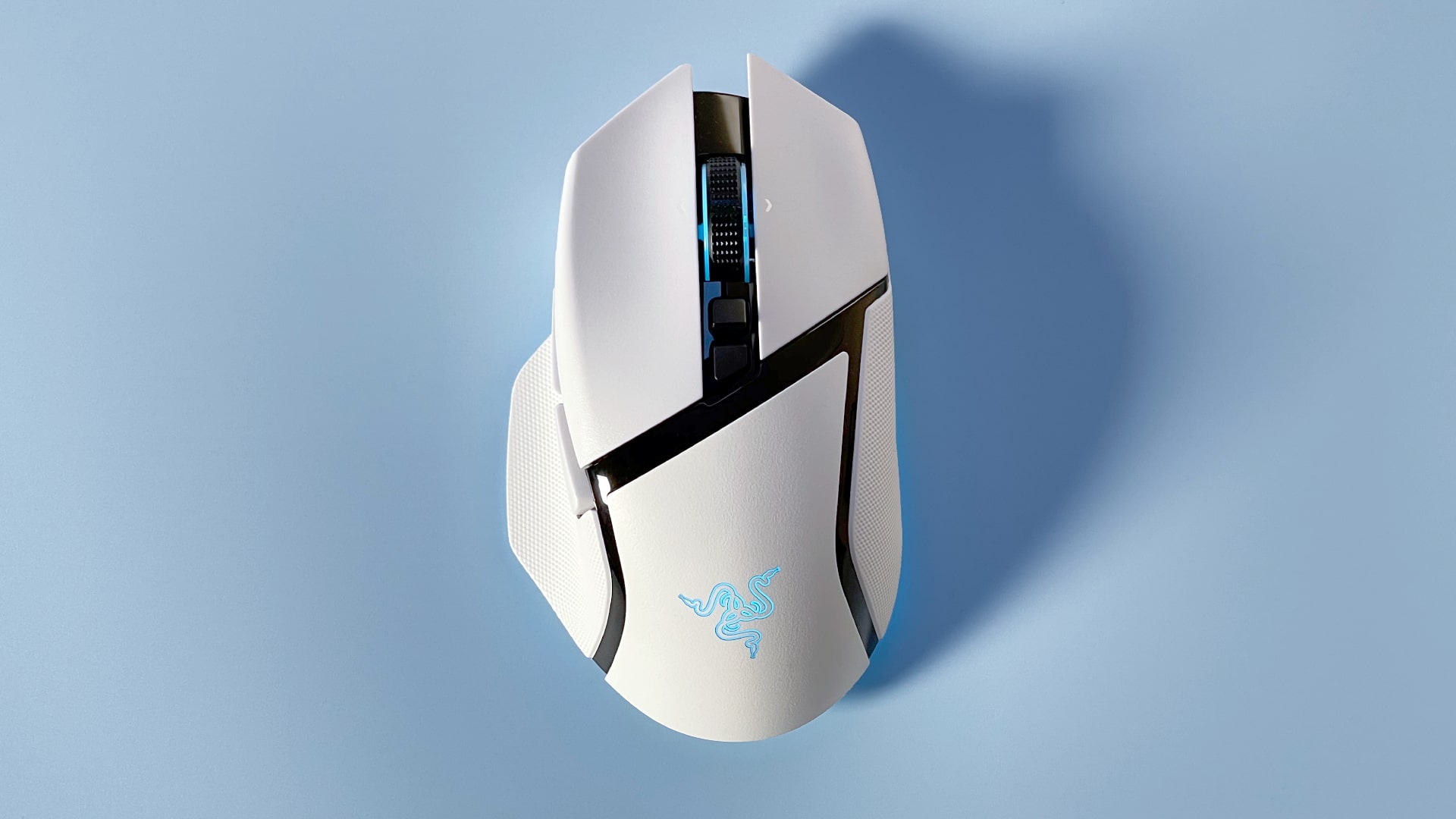
Razer’s latest addition to its Basilisk range of gaming mice is the Basilisk V3 Pro 35K, but compared to the (now discontinued) Basilisk V3 Pro, you might think that Razer has simply added a new higher-DPI sensor, stuck “35K” on the name, and called it a day. Yet in actuality, there’s much more to its new mouse than that.
Sure, the sensor is part of it – Razer has increased the DPI from 30,000 to 35,000 – and if you’re an esports pro, you might be enticed by that. But there are changes for everyday gamers too, from longer battery life to a “Smart-Reel mode” that changes how the scroll wheel works on the fly.
Aside from the new additions, this is just an excellent mouse, plain and simple. Its clicks are quiet and satisfying, it skims smoothly across your mouse mat, and its HyperSpeed wireless 2.4GHz receiver provides reliable connectivity. These features might not grab the headlines, but they’re just as important as those that do. Combined, these features all make this a really solid gaming mouse.
Razer Basilisk V3 Pro 35K: Price & availability
- How much does it cost? $159.99 / £159.99 / $279.95 AUD
- When is it available? Available now
- Where can you get it? Available globally
Razer doesn’t price the Basilisk V3 Pro 35K cheap – at $159.99 / £159.99 / $279.95 AUD, it’s a serious investment. There’s an awful lot of excellent tech included, so you do get what you pay for, but you’ll need to think about whether it’s right for you before pulling the trigger.
Razer Basilisk V3 Pro 35K: Design
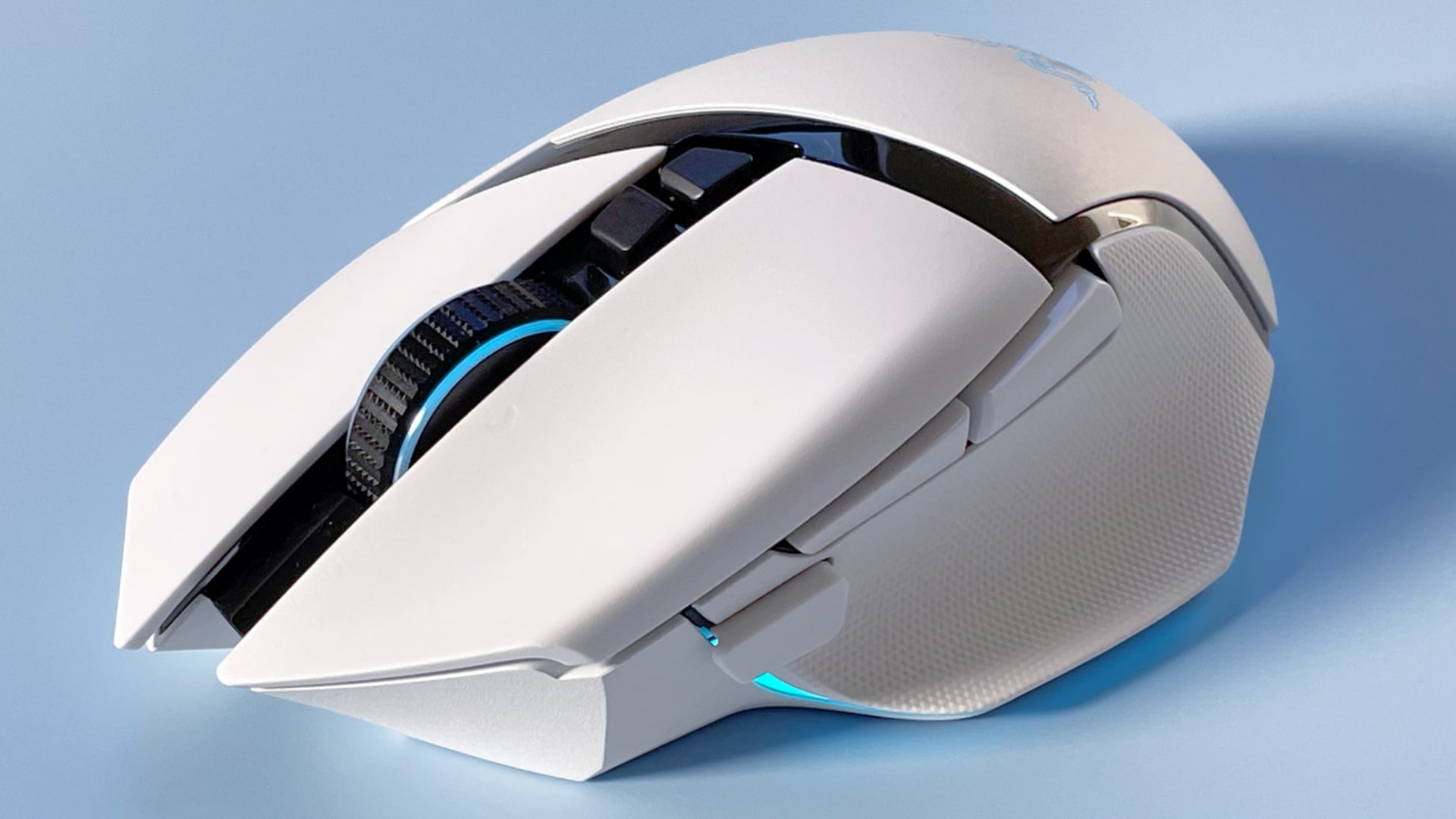
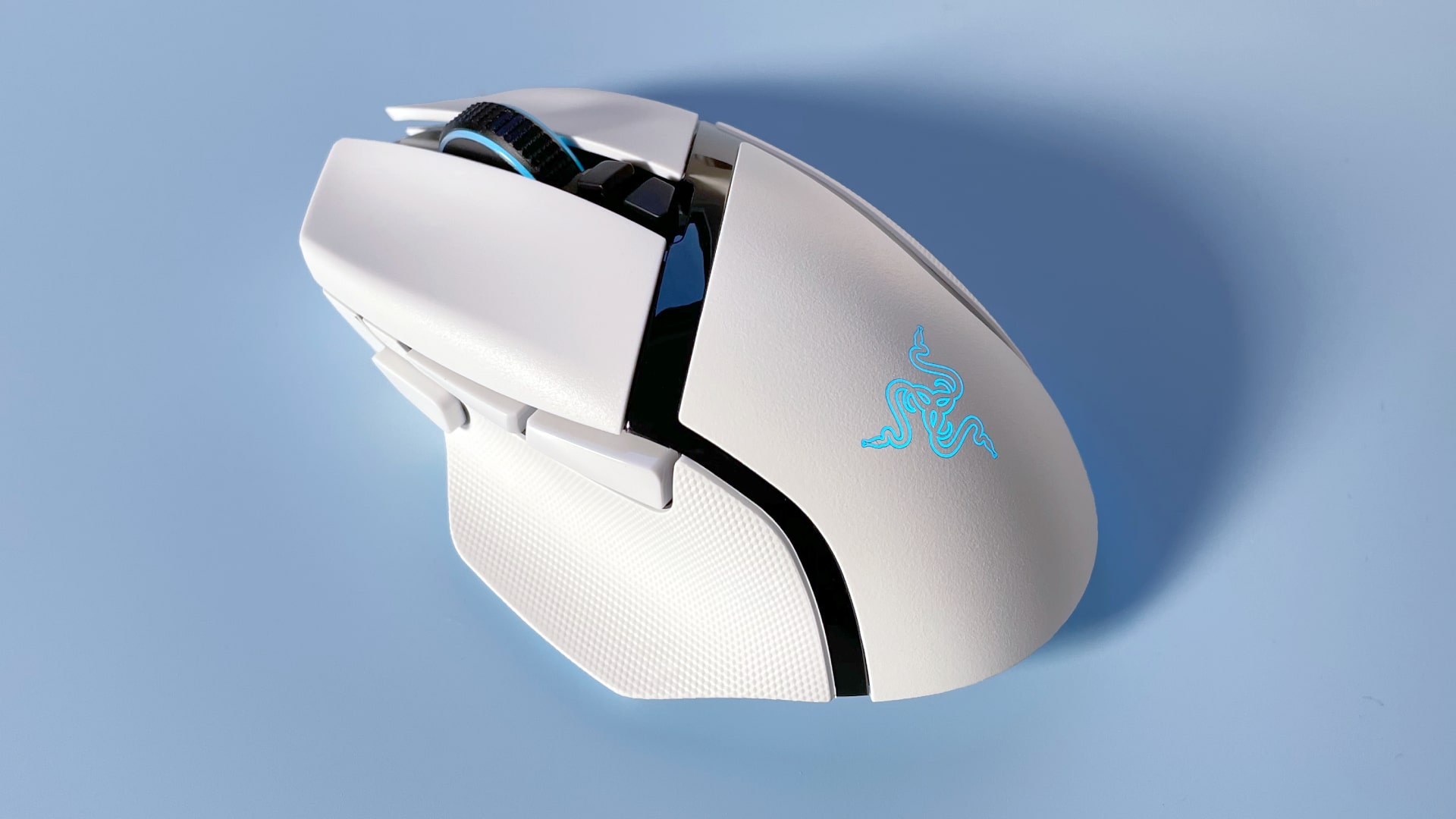
The Razer Basilisk V3 Pro 35K is one of Razer’s chunkier gaming mice, and much of this is due to its sculpted, ergonomic form factor. There’s a concave cutout for your thumb that’s covered in textured dimples for extra grip, while the mouse has an asymmetrical profile when viewed from the front, with the left-click button rising higher than its right-click sibling. Put together, it’s a very comfortable design.
At the same time, that extra bulk means it’s quite a heavy mouse. Weighing in at 115g, there are many lighter gaming mice out there. If you play fast-paced games where rapidly moving your pointer around the screen is a key element, the Basilisk V3 Pro 35K might not be quite right for you. Part of that is compensated for by the 35,000 DPI sensor (more on that later), but it doesn’t make the weight irrelevant.
Razer’s mouse comes with 11 programmable buttons, including right click (you can’t change left click), a scroll wheel that can be pushed in, moved up and down, and tilted left and right, two customizable buttons behind the scroll wheel, and three thumb buttons on the left-hand side (including one that’s set to lower the mouse sensitivity when held, which is useful for precise aiming during gameplay). Getting your thumb to that last one is a bit of a stretch, but otherwise all the buttons are easily reachable.
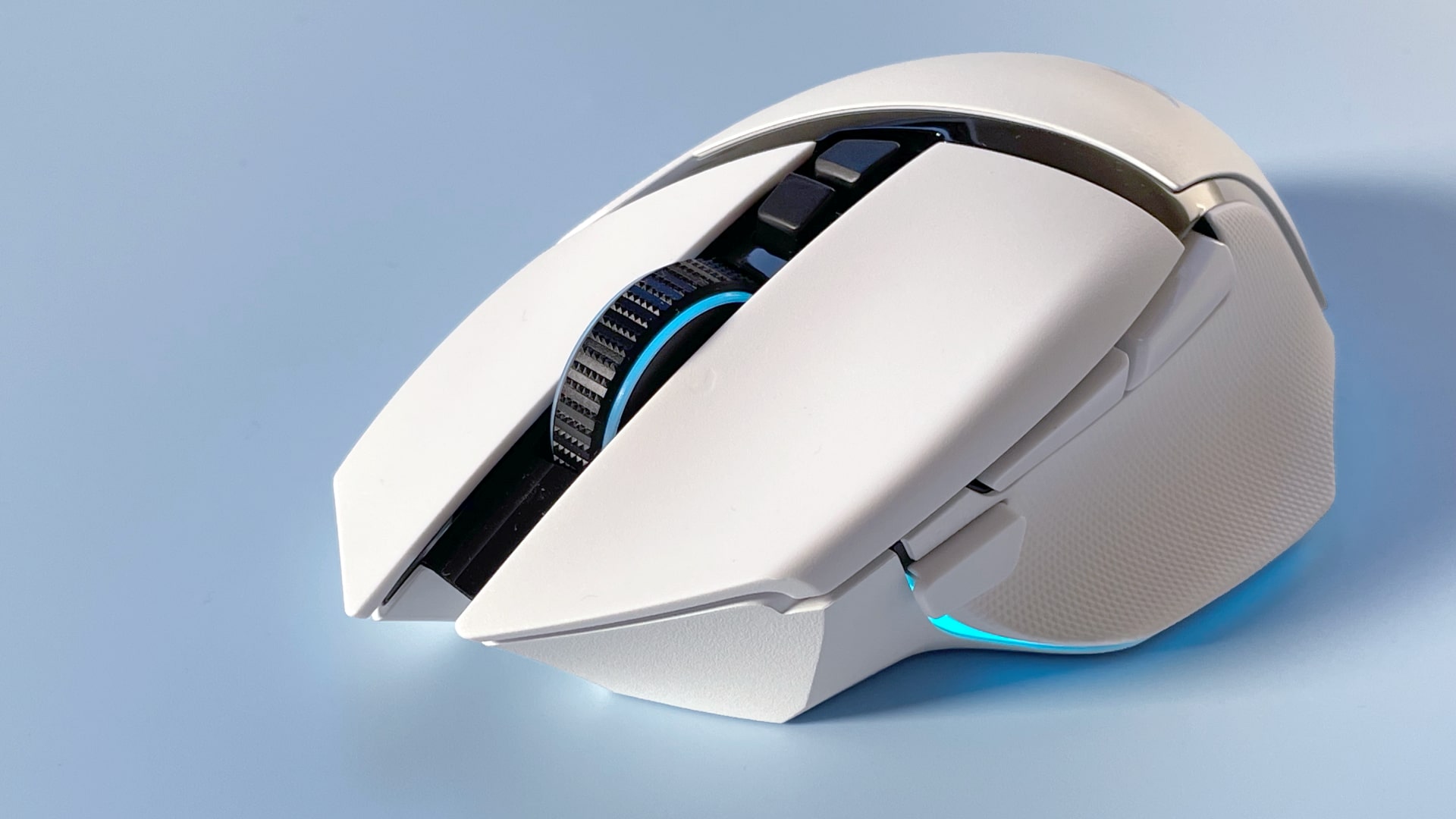
The scroll wheel is worth diving into a little more. It can be set to either ratchet or spin freely when you move it – or it can do both thanks to Razer’s Smart-Reel feature, ratcheting when moved normally and spinning when you flick it quickly. While this is potentially very useful, the wheel makes a loud, disconcerting slicing sound every time it switches modes. Nothing is actually breaking, but it’s a bit distracting. Still, when set to ratchet, the wheel is firm without being too rigid, making it ideal for use in fast-paced gameplay.
This wouldn’t be a Razer product if you couldn’t set all kinds of intricate RGB effects, and the Basilisk V3 Pro 35K impresses here. While the scroll wheel and Razer logo on the back of the mouse can light up, the real head-turner is the underside lighting, which gives a pleasant, subtle effect in use. Unfortunately, you won’t see much of it, as most of the RGB is covered by your hand (plus you’ll mainly be staring at your screen anyway). It can also speed up the mouse’s battery drain – I turned it off in the end.
Razer Basilisk V3 Pro 35K: Performance

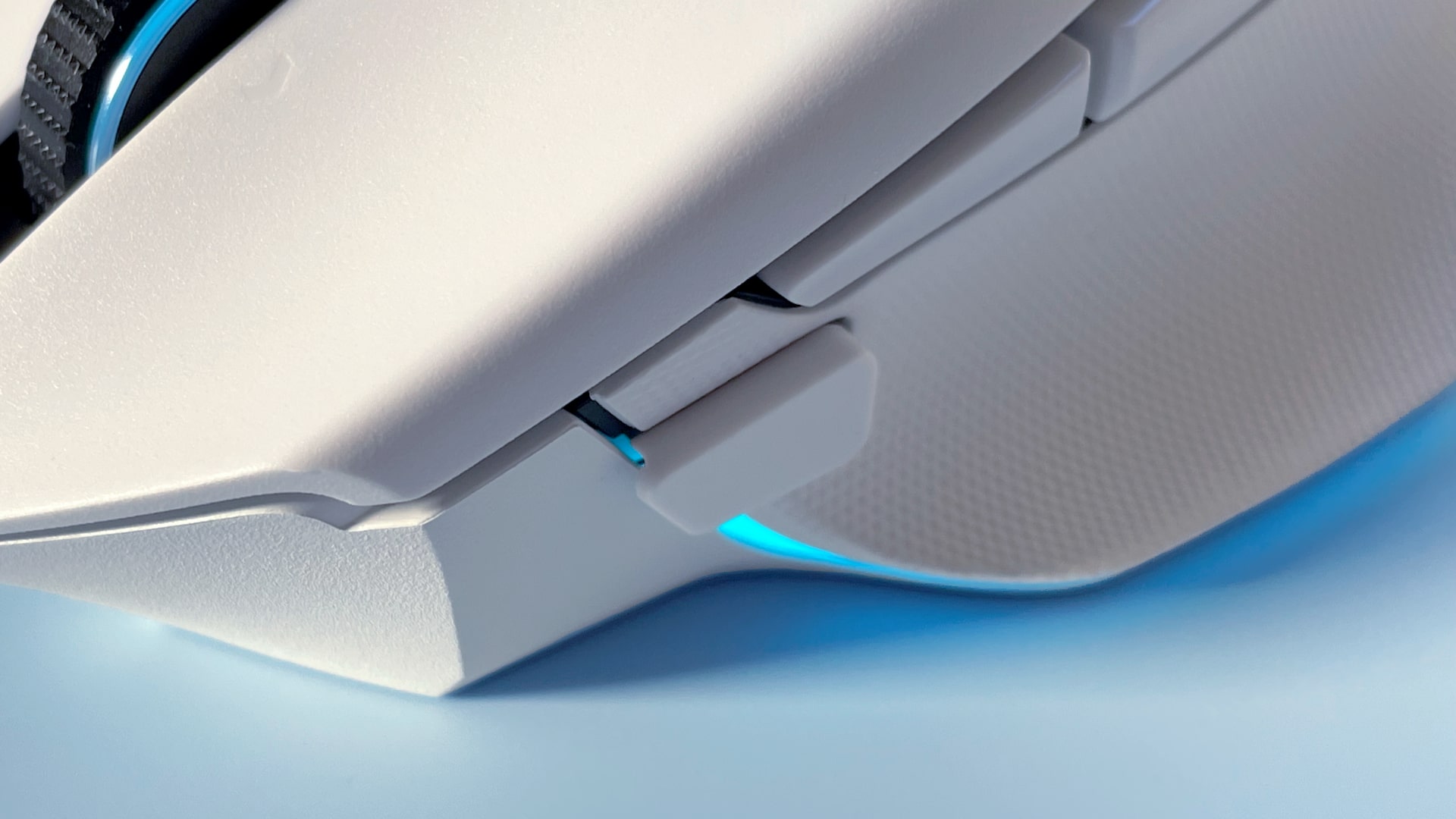
The mouse’s new optical sensor ramps all the way up to 35,000 DPI, which is frankly far more than I need (and it probably is for you too). Still, Razer boasts that it offers “best-in-class tracking performance on a wider variety of surfaces,” and I found it to be very accurate in use for both everyday work and gaming.
I connected the mouse to my PC using Razer’s HyperSpeed wireless 2.4GHz receiver, which was solid and reliable. If you have a compatible Razer keyboard, you can use a single HyperSpeed dongle for both your peripherals. The Basilisk V3 Pro 35K also offers wired and Bluetooth connectivity.
Paired with Synapse, there are a lot more controls for adjusting the mouse to your liking; you can customize the DPI down to the single-digit level, should you so desire. Not only can you set the scroll wheel’s spin mode (ratchet, free spin or Smart-Reel), but you can also tell Synapse how fast you need to spin the wheel before free spin mode kicks in.
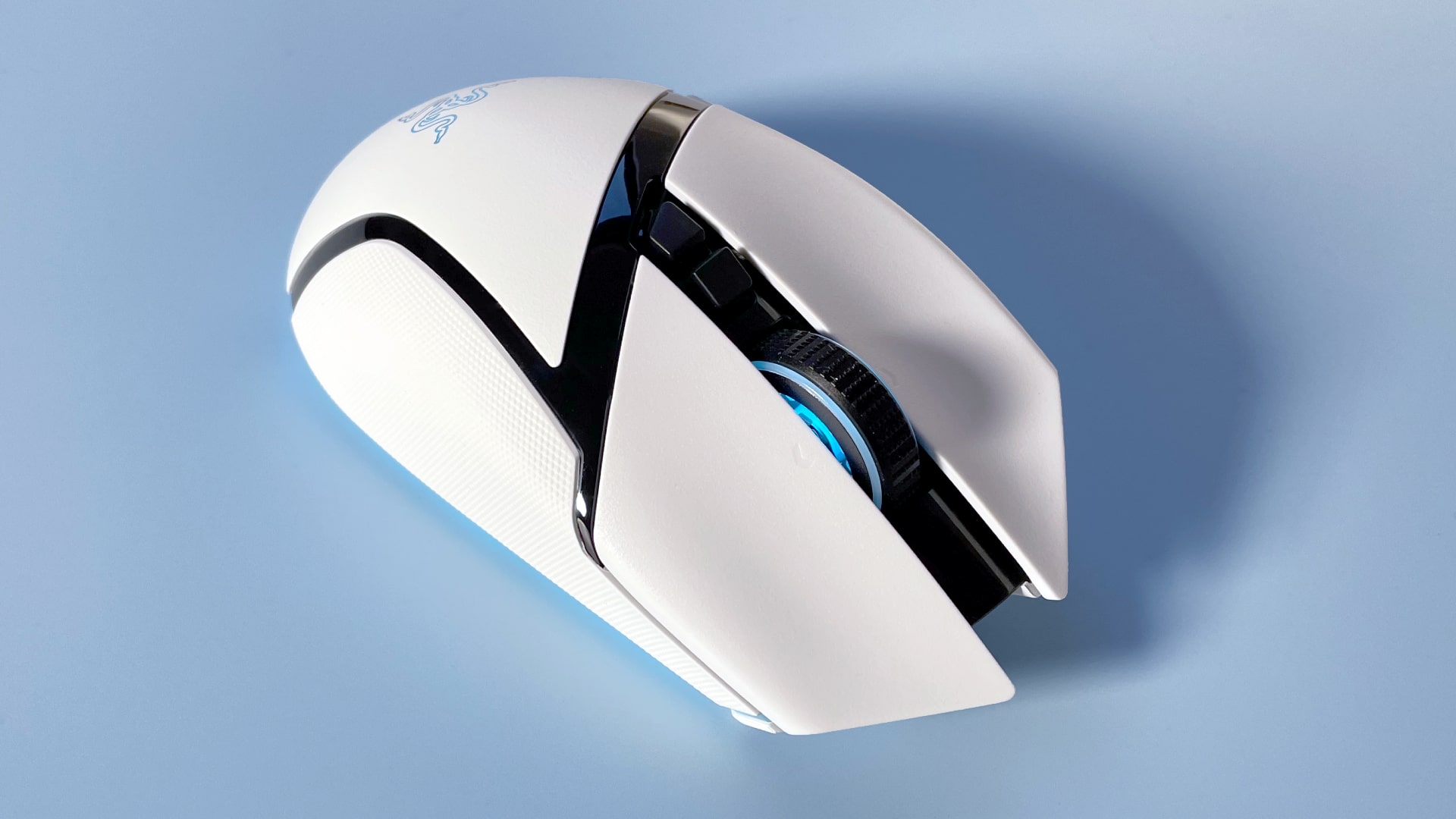
There’s also Razer’s smart tracking feature, which enables the mouse to set a consistent lift-off distance across different surfaces, and set separate lift-off and landing distances, too. As well as that, you’ll find a DPI sensitivity matcher that ports your DPI settings from other mice, scroll acceleration configuration, and more. In other words, you get a lot of control over the way your mouse works.
One of the other changes that came with the 35K model of the Basilisk V3 Pro is improved battery life. Razer says you’ll get up to 140 hours of juice out of it, and this seems about right. My review unit arrived with about 80% battery life, and I probably tested it for close to 100 hours in total. By the end, it was down to 15%. That was with RGB turned off and while using the HyperSpeed wireless 2.4GHz receiver, so your mileage may vary if you do things differently.
Should you buy the Razer Basilisk V3 Pro 35K?
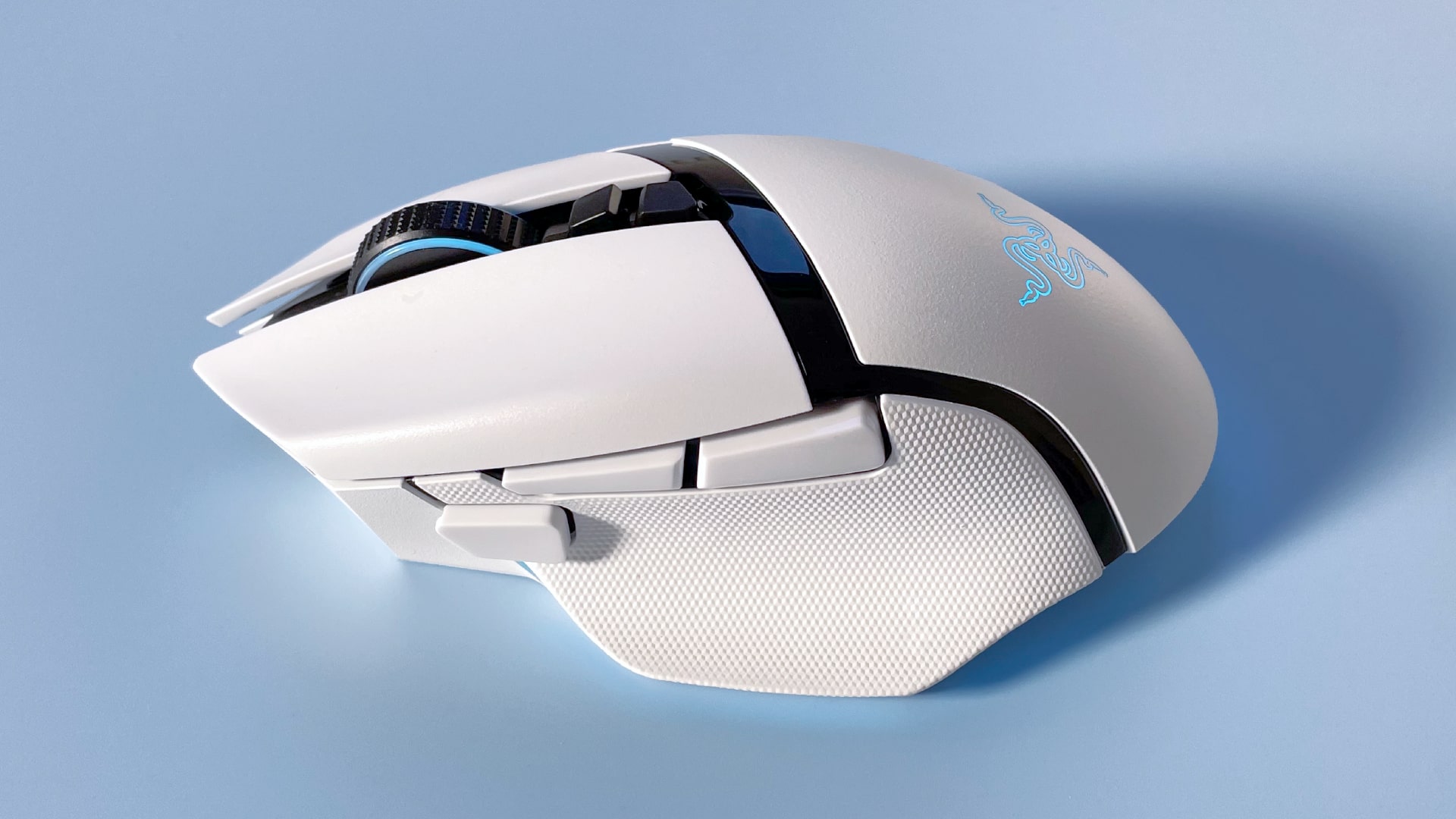
Value | At $159.99, this is an expensive mouse. Razer has packed in some impressive tech, but you’ll need to consider if you need it before forking out. Still, you get plenty for your cash. | 3.5/5 |
Design | The Basilisk is Razer’s most ergonomic mouse range, and the V3 Pro 35K is very comfy in the hand. It’s big and heavy, but whether that’s a problem depends on your use case. | 4/5 |
Performance | Impressive in almost every way performance-wise, the Basilisk V3 Pro 35K is great to use and easy to customize. | 5/5 |
Average rating | A superb mouse stuffed with worthwhile upgrades. It’s not for everyone, but it’ll tick plenty of boxes for lovers of ergonomic gaming mice. | 4.5/5 |
Buy the Razer Basilisk V3 Pro 35K if…
You want an ergonomic mouse
Razer has done a great job of sculpting the Basilisk V3 Pro 35K to neatly fit your hand, while (almost) all the buttons are easily reachable.
You value customization
With the Basilisk V3 Pro 35K, you can tweak everything from the DPI and RGB lightshow to the way the scroll wheel works. You can even import sensitivity settings from other mice using the Synapse app.
You need lots of programmable buttons
The Basilisk V3 Pro 35K may not have a grid of side buttons like Razer’s Naga mouse, but it has a surprising number of programmable buttons that you can set up how you like.
Don’t buy it if…
You’re left-handed
While the Basilisk V3 Pro 35K is well-designed for right-handers, there’s no left-handed option.
You don’t want something heavy
This is not a lightweight mouse, and while it’s not so heavy that it’s going to strain your arm, no one would describe it as featherweight.
Razer Basilisk V3 Pro 35K: Also consider
Logitech G502 X Plus
Another highly sculpted ergonomic mouse, the Logitech G502 Plus redesigns a gaming classic in a brilliantly considered way. Read our full Logitech G502 Plus review
Razer DeathAdder V3 Pro
The Razer DeathAdder V3 Pro is one of the best gaming mice you can buy. It offers impeccable performance and excellent ergonomics in a lightweight form factor. Read our full Razer DeathAdder V3 Pro review
How I tested the Razer Basilisk V3 Pro 35K
I spent a week using the Razer Basilisk V3 Pro 35K, including both gaming and work tasks. I also tried its Synapse companion app to see how easy it is to customize the mouse, set macros, change settings, and more.
First reviewed December 2024

Alex Blake has been fooling around with computers since the early 1990s, and since that time he's learned a thing or two about tech. No more than two things, though. That's all his brain can hold. As well as TechRadar, Alex writes for iMore, Digital Trends and Creative Bloq, among others. He was previously commissioning editor at MacFormat magazine. That means he mostly covers the world of Apple and its latest products, but also Windows, computer peripherals, mobile apps, and much more beyond. When not writing, you can find him hiking the English countryside and gaming on his PC.
